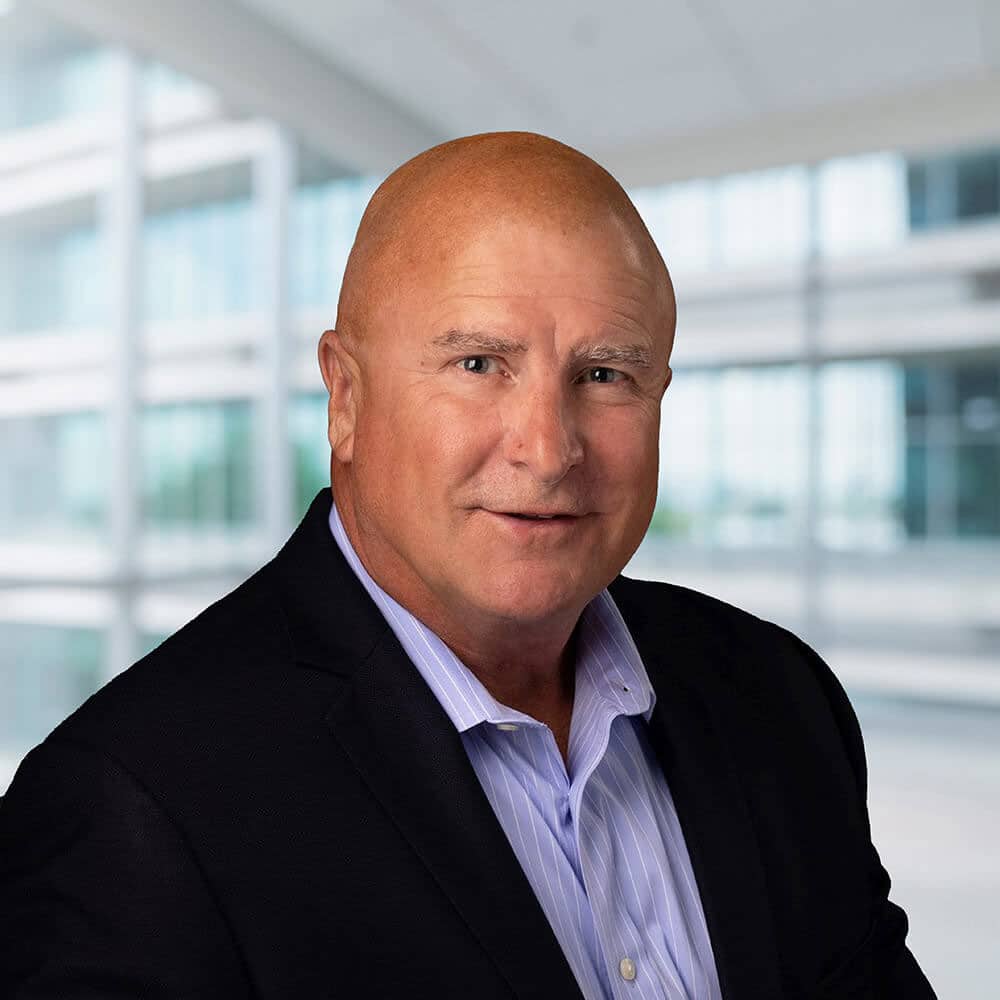The Ten Commandments of a Sound Omni-Channel Prospecting Strategy

The modern buyer is more informed, more connected, more discerning, more distracted, and less patient than ever before – all of which makes traditional single-channel prospecting (like picking up the telephone, but not doing much of anything else) an ineffective strategy for sales professionals. An omni-channel prospecting strategy – one that includes direct dialing, networking, digital engagement, email, texting, sequences, referral generation, industry events, and prospecting-enabling technology, is now a critical necessity.
Here are ten to-do items we’re now encouraging our clients to share with individual sales reps during coaching sessions. We’ve noticed that salespeople who make all ten “commandments” non-negotiable operating procedures tend to earn more than those who don’t!
- Do You Engage Regularly, and Strategically, on LinkedIn?
LinkedIn has emerged as an indispensable tool for prospecting, offering salespeople unparalleled access to a vast network of professionals across diverse industries. The platform’s real power lies in its unparalleled ability to facilitate targeted, meaningful connections. Salespeople can use LinkedIn’s advanced search capabilities to find and engage with key decision-makers and influencers within their desired market segments.The platform also allows for a deeper understanding of prospects through detailed profiles, activity feeds, and content engagement, enabling highly personalized outreach. Additionally, LinkedIn’s groups, forums, and content-sharing features provide opportunities for sales professionals to showcase their ability, take part in industry discussions, and build credibility. This strategic engagement not only generates leads but also nurtures relationships, making LinkedIn a vital part of a comprehensive omni-channel prospecting strategy. For help when it comes to setting up a customized weekly LinkedIn engagement cadence that works for your team, or making sure each individual rep’s LinkedIn profile attracts the right kind of viewer, drop me a line.
- Do You Prioritize Other Forms of Online Digital Engagement?
Don’t stop with LinkedIn. It’s the proverbial 800-pound gorilla, but it’s not the only online platform that matters to your team. Platforms like X, Threads, Mastodon, and Reddit can point you toward buyers and influencers, too. And industry-specific forums that don’t show up on one of the major media platforms can be important parts of your prospecting plan. Engaging with content, taking part in discussions, and sharing valuable insights on one or more of these “non-LinkedIn” channels can position your team members as thought leaders and trusted advisors – and connect them with prospects who may be difficult to reach through traditional methods. - Do You Include Direct Dialing as Part of Your Plan?
Despite the digital revolution, direct dialing remains a cornerstone of effective sales prospecting. Picking up the phone and making a call adds a personal touch that posts, emails, and texts typically lack. Voice-to-voice contact isn’t irrelevant to modern selling. To the contrary, it allows salespeople to set up immediate connections, gauge the tone and mood of the prospect, and adapt their messaging in real-time. While it may seem old-fashioned, direct dialing can break through the noise of digital communication, providing a human connection that is still valued by many prospective buyers. - Do You Leverage and Expand Existing Professional Networks?
Networking is not the same as referral generation. Networking is connecting with others to build professional or social connections, rather than for business development. Networking, whether through professional associations, social gatherings, or online platforms, is an essential part of expanding one’s professional circle. Engaging with peers, industry leaders, and potential clients in a non-sales environment can lead to valuable connections and insights. Effective networking helps salespeople stay informed about industry trends, uncover new opportunities, and establish trust and credibility within their network. - Do You Use Highly Personalized Emails and Text Messages?
Email and texting remain vital components of an omni-channel strategy. When personalized in such a way that the reader instantly knows someone conducted recent, glove-fitting research on their world, these messages offer a way to communicate with prospects at their convenience, providing a written record of interactions and follow-ups.Personalized emails that address specific needs or challenges can be highly effective, while text messages can be used for quick updates or reminders. Both methods enable consistent communication, ensuring that prospects are nurtured through the sales funnel. Some buyers and influences – not all, but some – prefer texts and emails to voice-to-voice or face-to-face initial contact. Why leave them behind?
Personalization of these messages can feel difficult and time consuming, so most salespeople end up skipping it. One way to make the job easier is by using a tool like the Humantic AI assistant. This tool provides native personalization across every major communication channel, not just texts and emails … but it definitely makes those a lot easier to personalize. Humantic AI not only personalizes the message, but also automatically tunes it based on recipient’s DISC profile!
- Have You Used Sequences to Automate Your Follow-Up Process?
Using sequences—an automated series of emails, calls, and messages—helps ensure that no prospect falls through the cracks. Sequences provide a structured approach to follow-ups, keeping salespeople on track and maintaining regular contact with prospects. By automating routine tasks, sales professionals can focus on more personalized interactions, enhancing the overall prospecting process. For help finding tools that will help you to setting up an automated sequence that will maximize your team’s follow-up numbers, drop us a line. - Have You Visited InfluenceBoard.com?
This is one of those great ideas I really wish I’d come up with. How can your team secure more conversations with hard-to-reach business influencers? By donating to their worthy causes! The web site promises “conversations with a foundation of mutual value, shared transparency, and respect for everyone’s time.” Why not check it out? You and your team might just get introductions faster, close deals sooner, and – who knows – even — make the world a better place. - Do You Have a Clear, Consistent Referral Generation Process?
Referrals are one of the most powerful tools in a salesperson’s arsenal. They come with built-in trust and credibility, significantly increasing the chances of a successful engagement. Actively seeking referrals from satisfied customers, colleagues, and industry contacts can open doors to new opportunities. A well-executed referral strategy not only generates leads but also strengthens existing relationships. For help setting up an industry-specific referral-generation process that everyone on your team can easily follow, talk to us. - Do You Maximize Face-to-Face Connections?
Industry events, conferences, and trade shows offer unparalleled opportunities for face-to-face interactions with potential clients and industry influencers. These events allow salespeople to showcase their products or services, gather market intelligence, and build personal connections that are difficult to achieve through digital channels alone. Attending industry events demonstrates commitment and engagement, helping salespeople stay top-of-mind with key prospects. - Do You Tie It All Together Seamlessly?
An omni-channel prospecting strategy integrates all these elements into a cohesive, dynamic whole. By leveraging multiple channels systematically to deliver highly personalized messaging, salespeople can reach a wider audience, engage prospects in their preferred modes of communication, and build more robust relationships. For a look at an integrated approach ensures that sales efforts are not siloed but complementary, maximizing the impact of each interaction, check out this powerful video.
For more ideas on bringing your team’s prospecting plan into line with the realities of the (distracted) modern buyer, download this white paper. It will help your team avoid the most common mistakes when it comes to executing a sound omni-channel prospecting plan.
Written by Michael Norton.
Have you read?
Countries: Women in the workforce. Countries: Personal space. World’s Most (And Least) Religious Countries. Best Countries to Invest In Travel, Tourism, and Hospitality. Most Forested Countries In The World.
Bring the best of the CEOWORLD magazine's global journalism to audiences in the United States and around the world. - Add CEOWORLD magazine to your Google News feed.
Follow CEOWORLD magazine headlines on: Google News, LinkedIn, Twitter, and Facebook.
Copyright 2025 The CEOWORLD magazine. All rights reserved. This material (and any extract from it) must not be copied, redistributed or placed on any website, without CEOWORLD magazine' prior written consent. For media queries, please contact: info@ceoworld.biz








